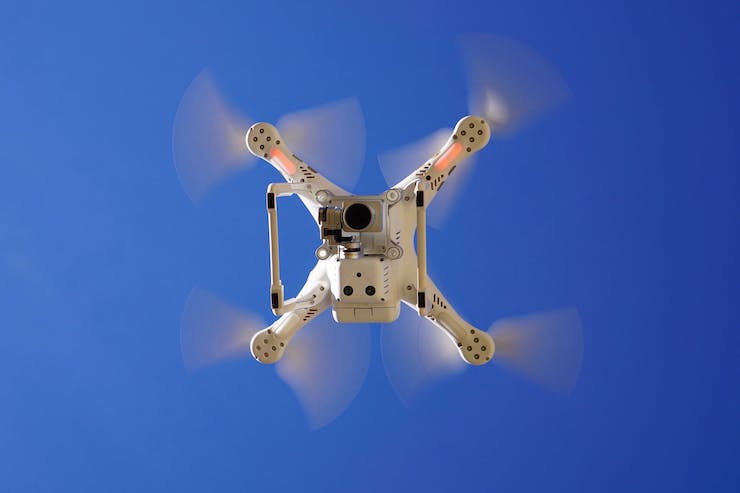Back in 2016, the FAA Established the Drone Advisory Committee (DAC) to Make Sure the Drone Industry’s Voice Was Heard

Up until recent times, drones were mainly used by military organizations or hobbyists. Over the past decade, drone use has spread to countless commercial industries. They have become key tools for areas of scientific research, agriculture, inspection, securities, entertainment, logistics, emergency response, and so much more. Finding ways to integrate drones into a daily environment has become a hot issue, one the FAA (Federal Aviation Administration) has had to put a lot of focus on. In 2016, the FAA established the Drone Advisory Committee (DAC) to ensure drone related issues were given the attention they deserved. As explained on the FAA’s website, the DAC “is a broad-based, long-term Federal advisory committee that provides the FAA with advice on key UAS integration issues by helping to identify challenges and prioritize improvements. The committee helps to create broad support for an overall integration strategy and vision.”
The committee is made up of 35 rotating drone industry leaders who are selected to serve for a term of 2 or more years at a time and are appointed by the Department of Transportation (DOT). According to the FAA, these members are “comprised of CEO/COO-level executives from a cross-section of stakeholders representing the wide variety of UAS interests, including industry, research and academia, retail, and technology.” In May of 2019, DOT Secretary Chao appointed Michael Chasen as the new chair of the DAC. Michael Chasen has been the CEO of PrecisionHawk USA Inc. since 2017. “Innovation is one of Secretary Chao’s top priorities for the Department of Transportation,” said FAA Acting Administrator Daniel K. Elwell. “Michael and the DAC will help guide the FAA to build flexible, responsive regulatory processes that can keep up with the industry’s creativity while ensuring the highest level of safety.”
Michael was joined by 11 other new DAC members in 2019. A few of these new members included Mariah Scott, President of Skyward, Captain Michael Leo of the New York City Fire Department, and Michael Sinnett, Vice President, Product Development and Strategy of Boeing Commercial Airplanes. A few months later, on February 5, 2020, the FAA announced the appointment of 2 new members “Christian Ramsey, President of uAvionix Corp., headquartered in Bigfork, MT, and Lee Moak, founder and Chief Executive Officer of The Moak Group in Washington, D.C.” Since the DAC’s incorporation, the committee tries to meet in person at least twice a year.
As there are no representatives from smaller commercial drone entities or drone hobbyists included in the DAC, all meetings and meeting notes are open to the public. Meeting itineraries are made available in advance and members of the public are invited to submit questions to the committee. When Mariah Scott joined the committee a big topic of discussion was the approval of LAANC (Low Altitude Authorization and Notification Capability), an area that Skyward specializes in. “The success of LAANC is the direct result of the FAA partnering with industry to create safe, sensible regulatory processes that have been automated and delivered by software providers such as Skyward,” Mariah said. “This is just the beginning. A system of Universal Traffic Management that enables safe sharing of the airspace, from commercial airliners to small drones as well as the ‘flying cars’ of the future, is what the industry needs to truly flourish, and I look forward to working with the FAA and the other members of the DAC to make that shared vision a reality.”
Other topics addressed by the committee included the need for drones to be able to be remotely identified. At the October 17, 2019 meeting Jay Merkle, director of the FAA’s UAS Integration Office presented the need for a drone ID system. As outlined in the meeting’s public notes, “Merkle highlighted the importance of remote ID as the identification and discrimination of any threat caused by UAS, also stating that this technology is fundamental for complex operations and is central to safe and secure integration of UAS into the NAS.” Though the DAC unanimously agreed with Merkle, they also all realized that this motion would take quite some time to accomplish.
On February 27, 2020, shortly before the United States entered a period of quarantine due to the coronavirus, the DAC held their last in-person meeting in Washington, D.C. Presentations continued on the development of remote IDs for drones, geofencing parameters, and the advancement of detect-and-avoid (DAA) technology. It is widely agreed that these 3 topics are collaboratively necessary to get the field of drones to the next level, especially DAA applications. “We are seeing a need to create a larger DAA framework, in that DAA is one term but we realize it applies in many ways, (and) many levels of performance,” Merkle said. “And we’re preparing to engage industry in a conversation of what does that framework look like and how can we best use it.”
The next DAC meeting is scheduled to take place virtually on this Friday, June 19, 2020. While topics previously discussed will surely be revisited, one major area for discussion is set to be traffic management of drones. The timeline for addressing all of these issues has been moved up due to the spread of COVID-19. Since people have had to abide by social distancing and lockdown procedures, they have become more reliant on drones to assist them in daily activities. It has become the responsibility of the DAC to report to the FAA ways of insuring the public will be able to use drones under the strictest of safety measures.
|